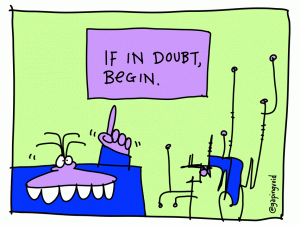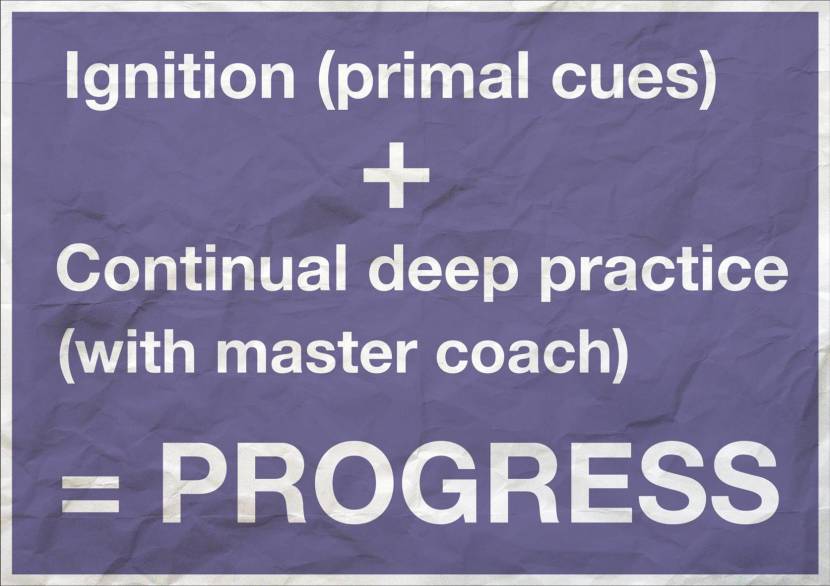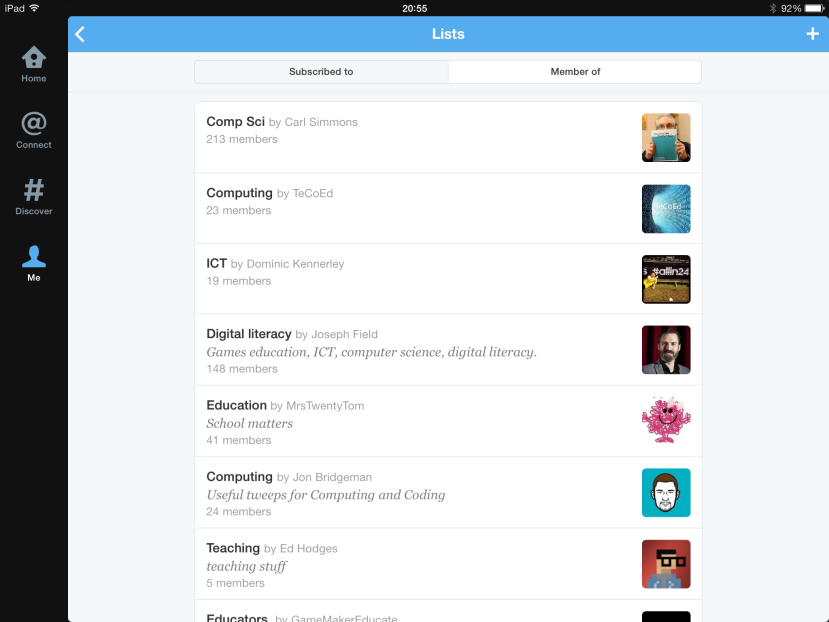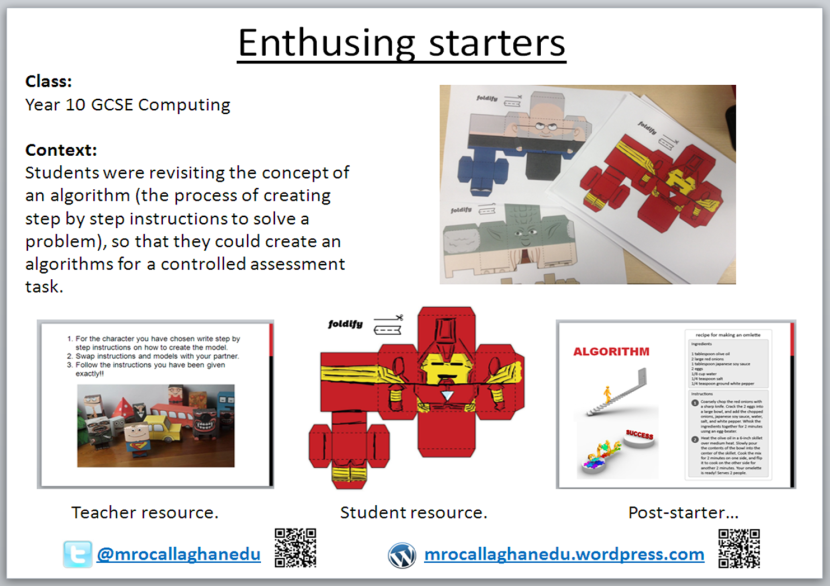Tagged: twitter
#TMCOOP presentation – Raising attainment at KS4.
On Thursday 22nd May I presented some ideas at #TMCOOP about how to raise attainment at KS4. Below is a summary of my presentation.
Raising attainment at KS4.
I’ve noticed in my relatively short time of being a teacher that one of the overwhelmingly strongest indicators of how well a student achieves is effort. This may sound obvious. It is. Angela Duckworth discovered this in her research on GRIT (persistant effort towards a long term goal). If we want to do well at something that’s difficult it will require a huge amount of effort. How often do students not realise this until it is too late… “I wish I’d put more effort into revising.” When I look back over the past few years and analyse why some students have performed well at KS4 and some didn’t, the main differentiator is effort.
During last two terms I have attempted to build an ‘ethic of excellence’ in my classroom. I want all students to aspire to achieve the very top grades and I want them to know it will take a huge amount effort. I also want them to know that I will match their effort by supporting them through rigorous marking and feedback. Students aren’t always the best at following instructions from adults but they can be extremely good at mimicking behaviours.
An ethic of excellence.
Having read Ron Berger’s remarkable book ‘An Ethic of Excellence’ I was motivated to get my students working their socks off. In the book Berger talks about how he spends a lot of time ensuring that the work he asks his students to do is as close to a ‘real life’ as possible. He also discusses how he built a culture in his classroom whereby students only received one of two grades for their work – ‘Excellent’ or ‘Not finished yet.’ What a powerful system. I decided to give it a try with a GCSE class that were about to start a 10 week coursework project. Target grades ranged from A to E.
High expectations.
Do target grades have an adverse effect on effort? If a student is targeted a D/E grade, is it possible that they might see that as an opportunity to adjust their effort to reflect the low target, i.e. not try very hard. To test this hypothesis I started by setting a default expectation of all students in the class: A*. Was I confident that all students would achieve this? Realistically, probably not as there are many factors out of my control (attendance being one of them). But I was confident that this strategy would help everyone achieve or exceed their target grade (something that I hadn’t managed to do in the past).
Talent isn’t born.
I spent sometime explaining to students about the David Beckham’s and Jonny Wilkinson’s of this world and how much effort they put into practising. At the beginning of most lessons we would watch a short clip that actively demonstrated how high levels of effort matched with deliberate practice can lead to very impressive results. I found the work of Daniel Coyle (and his book ‘The Talent Code’) particularly helpful in shaping my thinking around this. In his book, Coyle explains how he spent almost two years scouring the world researching groups of talented people – from teenage Brazilian football players to young musical prodigies. A recurring theme was shared amongst all these successful groups. Lots of effort coupled with deliberate practice that was guided by a master coach.
Students were beginning to understand that the more effort they put in, the more they asked for my advice, the more they thought about their work the better the chance they had at achieving an A*.
Re-drafting
This is where the effort manifested itself in the classroom. I introduced Berger’s idea of grading work as either ‘Excellent’ or ‘Not finished yet.’ Berger describes the art of re-drafting brilliantly in the video ‘Austin’s butterfly’ which is about a young boy who is asked to draw a butterfly by copying a photograph. You can see the difference in quality from the first attempt to the final attempt.
I attempted to build a culture in the classroom where it was typicality that all students would re-draft their work. Students were asked to re-draft their work several times which often led to a small incremental increase in marks between drafts but a huge difference by the time the final draft was submitted. Students also learnt to take a bit more pride in their work which appeared to come about because they had put so much effort into the redrafting that when it came time to submit a final copy they wanted it to be as close to perfect as possible.
Feedback – no grades.
The re-drafting was helped along by precise feedback in which I gave no grades. Instead I opted to simply tell students how many marks they were away from an A*. I then broke the mark scheme down into very small specific chunks which when added up would give full marks. This helped me move away from phrases like “Explain more” and enabled me to give really precise feedback to students. If a student was 15 marks from an A* they were able to tangibly see where they could add those marks to their work. With a potential A* on the line they were happy to continue to re-draft.
Impact.
I’d like to say a class full of A* grades but that was not the case. However all students did either achieve or exceed their target grade with no student scoring below a C and four students securing an A*. It wasn’t just the grades that pleased me but also the students attitudes towards their work. In class they were more focused and keen to give me work to mark. The students were proud of what they had achieved and I was extremely proud of them.
What I have described in this post is by no means an exact science and I’m certainly not telling you to change what you’re doing, but this worked for these students.
And remember… “Don’t be upset with the results you didn’t get from the work you didn’t do.” I think this applies to us all.
#neverstoplearning
GCSE Computing revision materials.
GCSE Computing revision materials.
This is a work in progress. This post will be updated regularly over the next few weeks to cover the OCR GCSE Computing syllabus. The resources can be easily adapted if needed. Feedback welcome!
Read more about the approach to revision I’m trialling here.
1. Computer Systems
Self-reflection[PDF] [.DOC] | Chunked revision booklet [PDF] [.PPT] | Multiple choice questions [PDF]
2. Hardware
Self-reflection[PDF] [.DOC] | Chunked revision booklet [PDF] [.PPT] | Multiple choice questions [PDF]
3. Software
Self-reflection[PDF] [.DOC] | Chunked revision booklet [PDF] [.PPT] | Multiple choice questions [PDF]
4. Data representation
Self-reflection[PDF] [.DOC] | Chunked revision booklet [PDF] [.PPT] | Multiple choice questions [PDF]
5. Databases
Self-reflection[PDF] [.DOC] | Chunked revision booklet [PDF] [.PPT] | Multiple choice questions [PDF]
6. Networks
Self-reflection[PDF] [.DOC] | Chunked revision booklet [PDF] [.PPT] | Multiple choice questions [PDF]
7. Programming:
Self-reflection[PDF] [.DOC] | Chunked revision booklet [PDF] [.PPT] | Multiple choice questions [PDF]
#neverstoplearning
Increasing bandwidth – Planning a revision session.
Talent isn’t born. It’s made.
In Daniel Coyle’s book ‘The Talent Code’ he travels the world to seek out groups of very successful people and in an attempt to discover why they are so successful. Through his observations of multiple different groups from musicians to football players he noticed one recurring trend – deep practice. In fact he has created an equation that summarises the elements needed to make progress and succeed at something. It looks like this…
Ignition or primal cues relates to the motivation a person has to be successful in the first place. As a teacher I believe it’s part of my job to talk to students about what motivates them to succeed. Some students are able to easily articulate this. whereas some will need some help finding the reason why they need to be successful. Either way I need to support the students I teach in understanding their ignition to succeed.
Continual deep practice is about increasing the amount of myelin in the brain*. Have a look at this great interactive guide to Myelin on Daniel Coyle’s website. Myelin is…
Myelin is a lipid and protein sheath-like material that forms an insulating cover that surrounds and protects nerve fibres.

Structure of a typical neuron from http://en.wikipedia.org/wiki/Myelin
The general idea is that the more myelin you have insulating your nerve fibres, the faster impulses (or information) can travel between nerve cells. Some scientists believe that myelin can be increased with regular deliberate practice. It’s similar to bandwidth in the speed of an internet connection. The more bandwidth you have the faster the transfer of data. The more practice you put in, the more the myelin wraps around the nerve fibre increasing the bandwidth (the diagram below shows this in a bit more detail). It’s worth noting that this works both ways and needs to be maintained with regular practice.
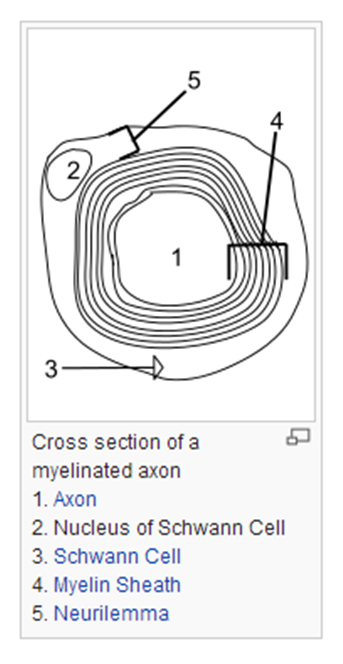
Cross section of a myelinated axon taken from http://en.wikipedia.org/wiki/Myelin
Daniel Coyle uses the example of Brazilian soccer players to explain deep practice in action. From an early age they play a game called Futsal and they continue to play it into their teenage years. Futsal is played on smaller court with a smaller ball which means that players will touch the ball more often than playing 11 a side on a full size pitch. This is deep practice. It’s quality controlled by a master coach (someone with expert knowledge of the game / subject) who intervenes with striking impact to ensure learning is meaningful. The video below examines more examples of where deep practice has produced successful outcomes.
How does this apply to revision?
If we want students to be successful in exams then they need to practice – sounds simple enough, but is not entirely true. If we want students to be successful they have to fine tune their practice so that it is deep, deliberate and regular in order to build up a thicker insulation of myelin. What follows are few strategies that I am currently trialling to achieve this.
1) Regular self assessment with input from the teacher.
It’s important to let students assess their own strengths and weaknesses when it comes to a topic to revise. Teachers are the master coaches described in ‘The Talent Code.’ We have to know our students well and track their learning and use this information to intervene with self assessments so that students know what they are actually good at and areas that they need to improve. The key to good revision (I believe) is to focus more time on the weaker areas (being deliberate) rather than spending lots of time revisiting knowledge/skills that a student is already competent in. Below is an example of a self-assessment I have used with students. The black ‘X’ represents the student response. The green Y’s represent my response based upon prior testing and my knowledge of the students competencies through questioning and classwork. If I have agreed with the students response I have not added an additional symbol.
The grid provides a clarity. Students get validation for what they think they already know or an opportunity to discuss area for improvements. It also helps students to focus in on the weaker areas and thus provides a starting point for revision.
2) Chunking information.
Once students have self assessed their strengths and weaknesses and they have been agreed, they can then begin revising required knowledge. In order to not overload the students working memory I have created a resource that chunks the information down in smaller sub-topics (see the list on the self reflection diagram above). Each sub topic has a series of questions that students answer in an open book environment. Example answers to these sections are released to students once they have attempted to answer them. They also have access to past paper exam questions and answers. Students are free to work through this revision pack using the self assessment as a rudder to guide them towards topics that will require more attention.
3) Regular rigorous multiple choice tests.
The ‘chunked’ revision materials are sync with a multiple choice test. I have created the tests using Joe Kirby’s brilliant posts on designing rigorous multiple choice tests (Post 1 | Post 2). I’ve attempted to increase rigor by adding more incorrect answers that are based on common student misconceptions.
The tests can be taken multiple times and using a platform like Edmodo means the tests are also tracked and scored without the teacher lifting a finger. Edmodo also allows students to go back through the test and see where they dropped marks.
A key element here is frequency and over a 6 week revision period it’s important to space the timing of these multiple choice tests to aid retention. As Joe points out in his most recent post on curriculum design,
Repeated retrieval improves long term retention: frequent quizzing prevents forgetting.
Read more about this here at Joe’s blog.
4) Regular ‘Walking – Talking’ mock exams.
One new strategy that has been trialled at my school this year has been ‘walking-talking’ mocks in all subjects. For those not familiar here’s how they work. The students revise for a mock as normal. When the mock exam takes place the teacher walks them through the first question and then gives students an appropriate amount of time (depending on the number of marks available usually) to complete the question and then get some instant feedback on how well they did. It’s hard to judge the real impact of doing this exercise but it certainly helps students feel more comfortable in exam conditions. I know I have been guilty in the past of running a mock exam in ‘exam conditions’, students tend to score poorly on it, get feedback but didn’t get an opportunity to re-draft answers (my fault) and the whole scenario was demotivating and not very productive. A walking-talking mock provide students to feel success in an exam environment. This new found motivation can then be used to drive revision sessions. As the year goes the strategy is to get students to sit 3-4 mock exams and by the end of the process provide them with less and less support as their confidence grows.
This post is by no means a ‘you should run revision sessions like this’ post. It’s a reflection on some of the ideas that have inspired my thoughts around how to do revision better. It is very much a work in progress and feedback is very much welcome!
I often tell my students to not be upset with the results they didn’t get from the work they didn’t do. I feel the same and care deeply about their results. When my students walk into the their exam I want to make sure I’ve done everything within my power to ensure they succeed.
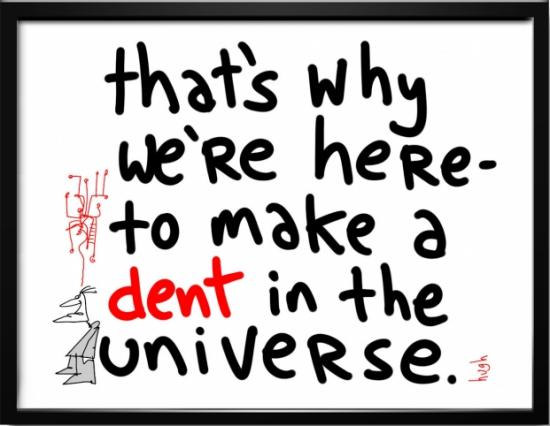
Image via @gapingvoid – http://gapingvoid.com/
Further reading:
Myelin – by Daniel Coyle
How to grow a super athlete – by Dainel Coyle
The myelin in all of us – by David Shenk
Why use multiple choice tests – by Joe Kirby
How to design multiple-choice questions – by Joe Kirby
Research on multiple-choice questions – by Daisy Christodoulou
Walking, talking mocks: are mock exams the way forward? – by Martin Jones
Hardwiring learning and effort = success – by Domini Choudhury
*I am not a scientist. For more information on myelin please see this interactive guide or even better still, read Daniel Coyle’s book ‘The Talent Code.
#neverstoplearning
Safe is risky.
Safe is risky. Very good is bad. We must be remarkable. Our students deserve nothing less.
Whatever your line of work it’s not enough to just follow instructions and be a cog in a bigger machine. As Godin points out in ‘The Icarus Deception’ and ‘Linchpin’, the industrial complex is dying and we are now living in a connected economy where it pays to give.
Let me explain a bit further.
Safe is risky. Playing safe will not enable you to grow. It’s only by taking measured risks that we learn and grow.
Very good is bad. This is a phrase we use when people do what we expect of them. The industrial age taught us that the reward for producing lots of ‘work’ is being given more work to do. So we tend to hold back. The trick here is to find your art, the meaningful work you do that doesn’t really feel like work at all. You will have a much greater chance of feeling a sense of fulfilment and viewing the fruit of your labour as meaningful.
We must be remarkable. Do remarkable things. Don’t settle for ‘very good,’ attempt the unexpected. Become a ‘linchpin’ (an indispensable member of your community) of your organisation.
Schools now more then ever need teachers who don’t see teaching as a job but an art form. Our lessons are our art (the work we attribute meaning to). We seek to challenge the status quo of how a lesson has traditionally been taught. We need to encourage students to think. When its work we try to do less. When its art we try to do more.
In order to be remarkable in the classroom we need to take risks and challenge ourselves as teachers, just as we encourage our students to. As soon as you embrace failure as part of the journey to success, the more likely you’ll learn, develop and improve. When I started teaching I saw pedagogy as a ladder to climb but I now view it as a jungle gym to explore.

Image via @gapingvoid – http://gapingvoid.com/
I’m currently using the following cycle to take measured (and some not so measured!) risks in the classroom:
1. Keep exploring. I’ve made a pledge to myself and to my students to never stop learning. This is my art. I enjoy doing this, it doesn’t feel like work to me. I read lots, blog and engage with Twitter to explore pedagogy and leadership.
2. Connect with others. I understand that the network is far more powerful than the node. I make connecting with others a typicality of my time spent using twitter and blogging. I attend teach meets and visit other schools to make connections and pursue learning.
3. Share discoveries. I blog here and have started a brand #neverstoplearning that offers a platform for more discoveries to be shared #neverstoplearning actively encourages teachers to share their discoveries and experiences. It also offers a stepping stone for teachers new to blogging. I’ll work with teachers to develop their first post and then share it via #neverstoplearning
4. Deepen my understanding. The cumulative effect for me is that my understanding of pedagogy is deepening (i hope!). I regularly take measured (and sometimes not so measured) risks in my classroom with a goal of improving the experience and outcomes for the students I teach.
Do the students light up when they enter your classroom or when they leave?
What is your art?
#neverstoplearning
The network is more powerful than the node.
If you are reading this post there is a good chance you came across it on Twitter. There’s also a good chance that this post may fall into the category of ‘teaching you to suck eggs’ or ‘preaching to the converted.’ If however you are a teacher and new to Twitter / blogging then this post may we’ll be worth the next 5 minutes of your life*.
Picture by @gapingvoid
What’s Twitter all about then?
Twitter is a social network used by millions to spread ideas and start debate. It allows people to interact with current news and create news. In the world of education it is used to share good practice / resources and start conversations about topical issues when generally enables people to become even more reflective in their own practice. Granted, there is no ‘trash’ filter, but for every 10 ‘beans on toast tonight then’ style post you are likely to come across some extremely intriguing posts that will lead you down a path of discovery.
Twitter basics for teachers:
The power of Twitter – an example.
Just over a year ago at the beginning of the summer holidays I began the first of my many summer projects, creating a baseline assessment for KS3 ICT / Computing groups. With the hope of speeding up this process I sent out a lone tweet into the twitter sphere…
This tweet was picked up my Mr Webber (a Computing teacher / developer based in Somerset) and led to the creation of an online KS3 baseline assessment tool. It started with just my school and Mr Webber’s school using it. Then last week I saw this tweet…
Highly unlikely to have happened without the connective powers of Twitter. Twitter is fantastic for connecting with like minded (and non-like-minded(always good to have a good debate)) souls because it makes it so easy to do so! Read more about the project at Mr Webber’s blog here.
Using Twitter to grow your Professional Learning Network (PLN):
Twitter is an excellent tool for growing your Personal Learning Network. The intuitive nature of Twitter makes it easy to search for like minded people, follow trends and stay up to date with the latest developments in education and pedagogy. It will not happen over night though. Patience and perseverance are key to building an effective PLN. Over time you will begin to build your tribe and see your influence spread and grow. The art of gift giving is what makes Twitter so special. I’ve lost track of the number of times I have used resources in my lessons direct from fellow teachers on Twitter who have felt compelled to share their outstanding practice. It’s the generosity of the network (the people) that makes Twitter an excellent platform for sharing and sourcing ideas – “The network is more powerful then the node.”
Tips for getting started:
1. Sign up and create a account. At this stage you may wish to think about branding. Who are likely to see your twitter account? Teachers, students, parents. How do you want to be perceived by these people? Some people come up with interesting learning related names such as ‘learningspy’ or ‘lessonhacker.’ Quite alot of people (myself included) have used their real ‘teacher name’ and added a suffix e.g. Mr O’Callaghan Edu or Mr Gill English. Be careful when choosing your profile picture – remember your audience and who may be looking at your profile.
2. Search for people / topics using the Twitter search tool.
3. Organise your twitter feeds using the ‘Lists’ function:
4. Little and often. Twitter could quite easily take over your life! My advice would be to dip into it, little and often. You will never see every tweet or keep up with every conversation.
5. Take part and share. Don’t be afraid to make a point, share a blog post or resource – you have just as much right to do so as anyone else on Twitter. The key here is quality over quantity.
Some people worth following to get your started (remember, have a look at their followers and follow more people):
Safe is risky. Be remarkable and don’t be afraid to share it!
#neverstoplearning
*Sorry – life non-refundable.
Tips for teaching Computing for the first time (list of resources included)
Influenced by a strong moral purpose to give students exciting, challenging lessons and a balance of computer science, IT & digital literacy, this time last year I started planning to deliver Computing. The first thing my lizard brain (see Seth Godin’s post) shouted out was “Ahhhhh coding, coding, codinggggg!!!” At this point it would have been quite easy to not make the change, but returning to my moral purpose of improving the experience for the students I teach, I decided to carry on. Over the last year I have learnt a lot (blog post reflecting on my first year teaching Computing is coming soon!) about Computing and engagement / challenge for students is up in lessons.
If you are reading this post there is a good chance you are either considering introducing, in the midst of planning or have already been teaching Computing. Below are some things I’ve learnt (loosely resemble ‘top tips’ – sounds a bit cheesy and I’m by no means an expert!) over the last year that I thought I’d share.
1. Practice makes better. Don’t put off learning to program, start now, right now after reading this. Go to code academy (http://www.codecademy.com) or Khan Academy (http://www.khanacademy.org/cs) or one of the other many online tutorial sites.
2. Do ‘little and often’ to ensure you remember what you learnt previously.
3. Accept failure as part of the journey to success. It’s unlikely you’ll get everything right first time, but be courageous and give it a go. Learn from your mistakes, that’s what we keep telling the students isn’t it?!
4. Start a Computing Club and use it as a laboratory to road test new technologies, activities , e.t.c. before trying them in class.
5. Join Computing at School (http://community.computingatschool.org.uk/door). CAS’s online community hosts 100’s of free resources for teaching Computing. They also have a number of ‘Master Teachers’ who are hand to answer questions and offer support, forum’s, CPD events and regular Hub meetings around the country.
6. Use Twitter to extend your PLN. I received help from a number of people on twitter who checked my program’s and tutored me through some of the GCSE level programming problems.
7. Make use of student guru’s. If you have students in your class that are already quite competent programmers, use them. Ask them to explain who they solved a problem and peer teach others.
8. Be honest. If you don’t know they answer to a question, be honest and say so. Turn it into an activity to find the answer. Take part in the learning journey with your students.
9. Shrink the change. Try focusing on one thing at a time. Introduce a couple of Computing modules at KS3 first and get use to teaching programming to solve problems. Then think about introducing a GCSE option the following September.
10. Accept that students have more time to spend becoming an expert then you do!
11. Continue being remarkable.
Resources:
You can find a list of resources I have built up over the last year HERE. I will be adding to this list regularly and if you would like to share an online resource (video, website, blog, e.t.c.) please leave a comment on the Google Doc and I’ll add it in.
If you have found this post useful please pass it on, re-tweet, leave a comment below…
#neverstoplearning
Teachers talking about teaching…
For the first time in a while I feel like CPD is making an impact on my teaching. This year it has stopped me in my tracks a few times and made me think, tweak and reassess what I am doing. Since a new leadership team started at my school in September a lot of changes have been made (for the better!) and as a result CPD has focused much more on outstanding practice with an emphasis on sharing. Many members of staff have already run CPD sessions and many more waiting to deliver. The new leadership team has built an ethos which has shifted the school from focusing on WHAT and HOW we do things to WHY we do things. Focusing on the WHY has to a reflective culture in the school with staff taking more risks in lessons in order to move students forward in their learning and offer new and exciting learning opportunities.
For the last two terms in CPD sessions teachers have been working in different groups (which they opted into depending on their interest) looking at different ways to improve teaching and learning. Groups were formed for topics such as differentiation, questioning, using data, e.t.c. I have been working with a group of teachers focusing on ways to increase student enthusiasm. Working with teachers from different subject areas gives a fresh perspective on the same students but being able to choose what I wanted to investigate is very powerful indeed. Regular meetings, lesson observations, brain-storming sessions, e.t.c led to each of us coming up with something new to try in lessons in order to increase student enthusiasm for our subjects. I was specifically looking at starters and picked up some great ideas from my English and Drama colleagues about getting students to use their imagination more and tie that in with literacy. Might sound obvious, but sometimes its easy to fall into the bubble of your subject area and lose the wider perspective that is needed to develop.
The end product was three fold
1. A mini teaching conference after school in the main hall where teachers were able to walk round and see what everybody had been working on and discuss ideas – Teachers talking about teaching!
2. Best practice card was created by each group with tips, ‘quick wins’ and longer term strategies that could be tried.
3. Once a week we have a ‘teaching briefing’ for all staff which is led by teachers. Groups took it in turns to present back what they had found out.
Understanding WHY we teach and re-focusing on that has provided me with a renewed determination to give the students I teach the best possible chance of success.

Idea taken from English and Drama colleagues to get students to think creatively about something. I was also inspired to try and conceptualise key blooms terms in order for students to have a deeper understanding of their meaning.
#NeverStopLearning







